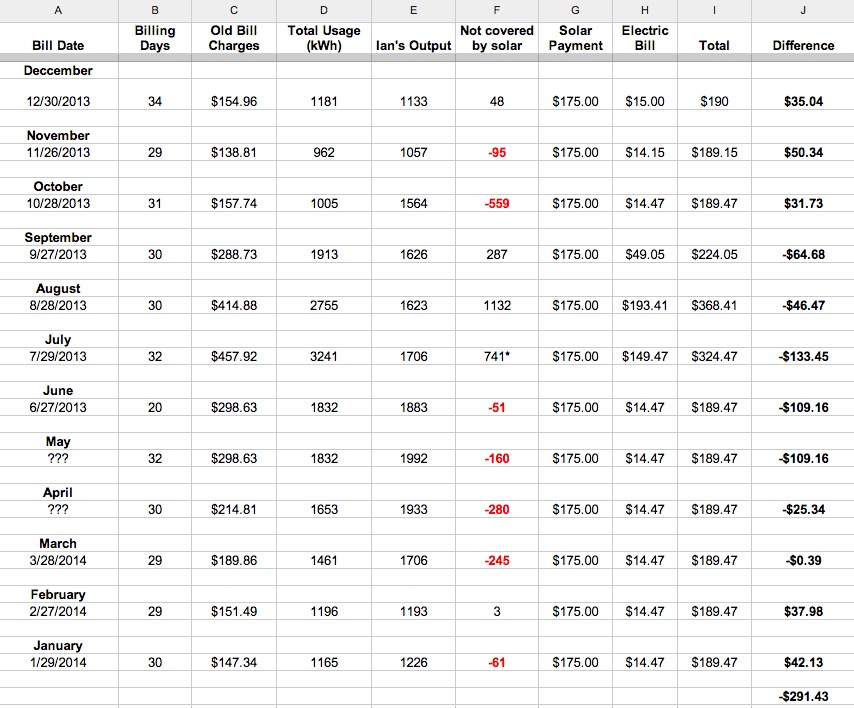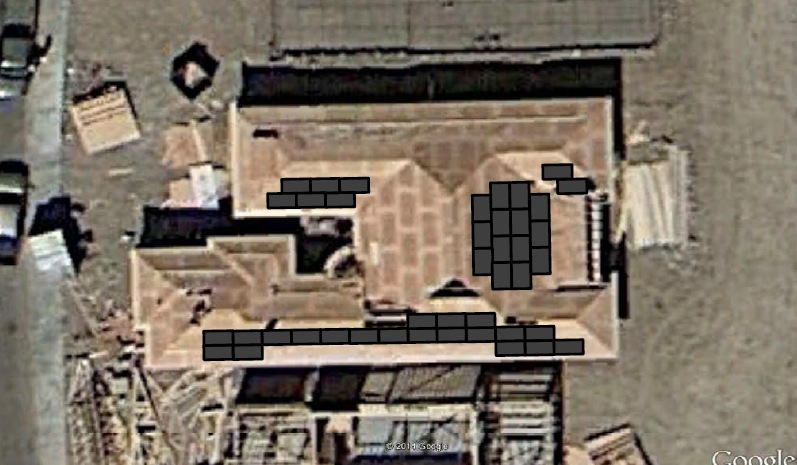Ian, thanks again for the link to your numbers, very helpful.
I took the numbers of your 6.9kW system and applied them to a 10.5kW (assuming it's linear) and got a yearly production of 18,621 which is close to the 18,020 I was quoted today. I then used a 1.52 multiplier and applied it to the past 12 months and compared the production to our usage. Now of course this is a total estimate but I'm hoping it's close to +/-10%.

This is based off the standard rate plan, not the TOU. Figuring the TOU would be a lot more difficult, I may do it if I get super bored.
According to this, I could see a potential savings right off the bat of ~$300/year. After the solar system is paid off, then the savings would be $2,400 per year. Does that seem about right?
I took the numbers of your 6.9kW system and applied them to a 10.5kW (assuming it's linear) and got a yearly production of 18,621 which is close to the 18,020 I was quoted today. I then used a 1.52 multiplier and applied it to the past 12 months and compared the production to our usage. Now of course this is a total estimate but I'm hoping it's close to +/-10%.

This is based off the standard rate plan, not the TOU. Figuring the TOU would be a lot more difficult, I may do it if I get super bored.
According to this, I could see a potential savings right off the bat of ~$300/year. After the solar system is paid off, then the savings would be $2,400 per year. Does that seem about right?
 I don't think we can fit that many...or we could, but I don't want any facing west or north as then we'd see them from the street coming home and I don't want that. Good to hear that the system produces more than they estimates, seems that's the trend with everyone.
I don't think we can fit that many...or we could, but I don't want any facing west or north as then we'd see them from the street coming home and I don't want that. Good to hear that the system produces more than they estimates, seems that's the trend with everyone.
 but he did an estimate before he came out. The system is smaller at 8.64kW but the price per watt is actually cheaper than the bigger system which impressed me. He said if we wanted a bigger system (and he's up on the roof measuring for how big of a system we could have), the price should come down (per watt).
but he did an estimate before he came out. The system is smaller at 8.64kW but the price per watt is actually cheaper than the bigger system which impressed me. He said if we wanted a bigger system (and he's up on the roof measuring for how big of a system we could have), the price should come down (per watt).
Comment